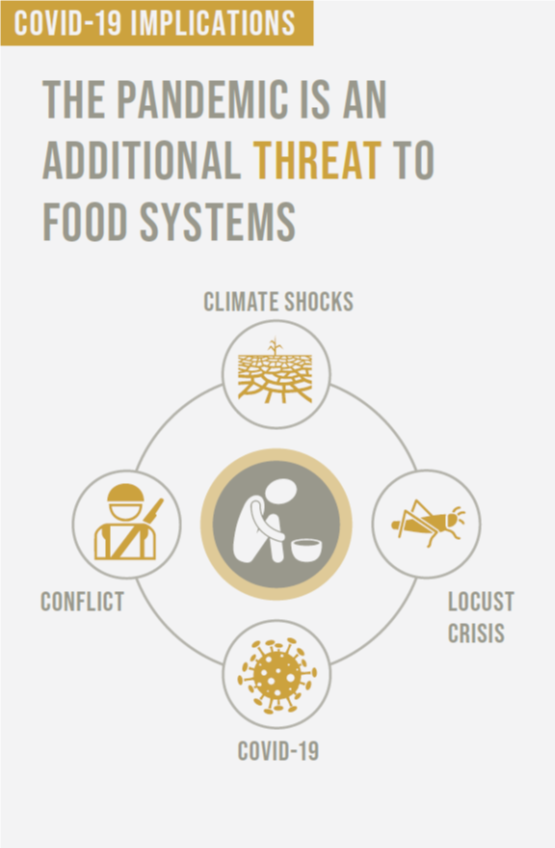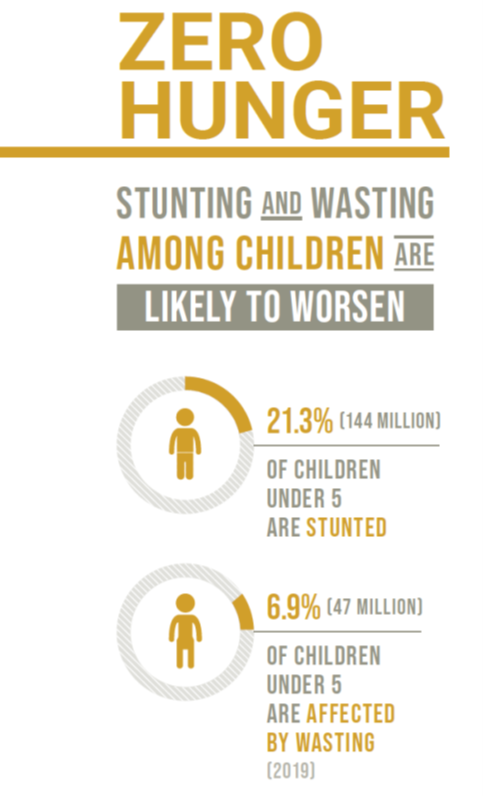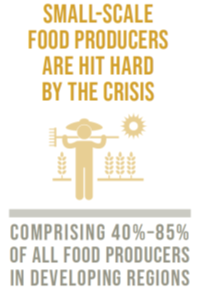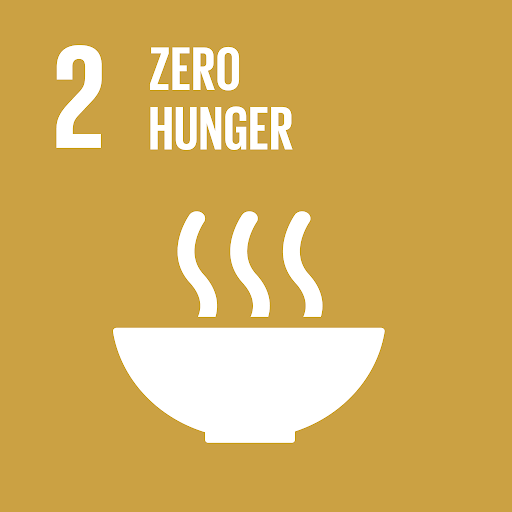 The world is not on track to achieve Zero Hunger by 2030. If recent trends continue, the number of people affected by hunger will surpass 840 million by 2030- nearly 10% of the global population.
The world is not on track to achieve Zero Hunger by 2030. If recent trends continue, the number of people affected by hunger will surpass 840 million by 2030- nearly 10% of the global population.COVID-19 poses an additional risk, pushing a quarter of a billion people to the brink of starvation. Radical development of the global food and agriculture system, particularly increased agricultural productive and sustainable food production, is crucial to alleviate the detrimental impact of hunger. The World Food Programme’s food assistance network is providing a critical lifeline to 87 million people worldwide- yet food supply chains and the agricultural sector remain particularly fragile to systemic shocks and can leave low-income communities particularly vulnerable.
Food scarcity is largely a result of climate change, civil unrest and declining food production. Public investment in agriculture is also declining. Small-scale food producers and family farmers require increased investment in infrastructure and technology to reduce hunger, poverty, and unemployment. In 2019, nearly one in ten people in the world were exposed to severe levels of food insecurity, and an estimated 2 billion people did not have regular access to safe, nutritious, and sufficient food.
Millions Living in Hunger

 World hunger is rising, with 1 in 9 people in the world undernourished. An estimated 821 million people were undernourished in 2017, a dramatic increase from 784 million in 2015. Over 381 million of the world’s undernourished are found in Asia, the highest regional concentration worldwide. However, 250 million undernourished people live in Africa, where the rate of hunger is increasing faster than anywhere in the world.
World hunger is rising, with 1 in 9 people in the world undernourished. An estimated 821 million people were undernourished in 2017, a dramatic increase from 784 million in 2015. Over 381 million of the world’s undernourished are found in Asia, the highest regional concentration worldwide. However, 250 million undernourished people live in Africa, where the rate of hunger is increasing faster than anywhere in the world. Child stunting — the impaired growth and development of children in part due to poor nutrition and repeated infection—has decreased since 2000. Yet 149 million children under the age of 5 were affected by stunting in 2018. An estimate of 7.3% of global children under the age of 5 are affected by acute undernutrition, also known as wasting. Globally, 40 million children under the age of 5 were overweight in 2018.
Agricultural Markets
 Two-thirds of poor employed persons worldwide are agricultural workers. In order to reduce the rise in hunger, building and strengthening small-scale and family farm production is crucial. Government spending on agriculture has declined 37% in 2017, and aid to agriculture in developing countries fell from 25% in the mid-1980s to 5% in 2017, a decrease of $12.6 billion. The World Trade Organization (WTO) has observed a decline in export subsidies, falling from $500 million in 2010 to $120 million in 2016. This reduction in export subsidies by governments is causing lower distortions in agricultural markets.
Two-thirds of poor employed persons worldwide are agricultural workers. In order to reduce the rise in hunger, building and strengthening small-scale and family farm production is crucial. Government spending on agriculture has declined 37% in 2017, and aid to agriculture in developing countries fell from 25% in the mid-1980s to 5% in 2017, a decrease of $12.6 billion. The World Trade Organization (WTO) has observed a decline in export subsidies, falling from $500 million in 2010 to $120 million in 2016. This reduction in export subsidies by governments is causing lower distortions in agricultural markets.Achieving Zero Hunger
Two-thirds of poor employed persons worldwide are agricultural workers. In order to reduce the rise in hunger, building and strengthening small-scale and family farm production is crucial. Government spending on agriculture has declined 37% in 2017, and aid to agriculture in developing countries fell from 25% in the mid-1980s to 5% in 2017, a decrease of $12.6 billion. The World Trade Organization (WTO) has observed a decline in export subsidies, falling from $500 million in 2010 to $120 million in 2016. This reduction in export subsidies by governments is causing lower distortions in agricultural markets.Ready to Take Action?
We’re taking the fight to Congress. Email This email address is being protected from spambots. You need JavaScript enabled to view it. for more info on how you can join us on Capitol Hill and beyond.LEARN MORE









